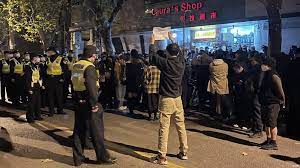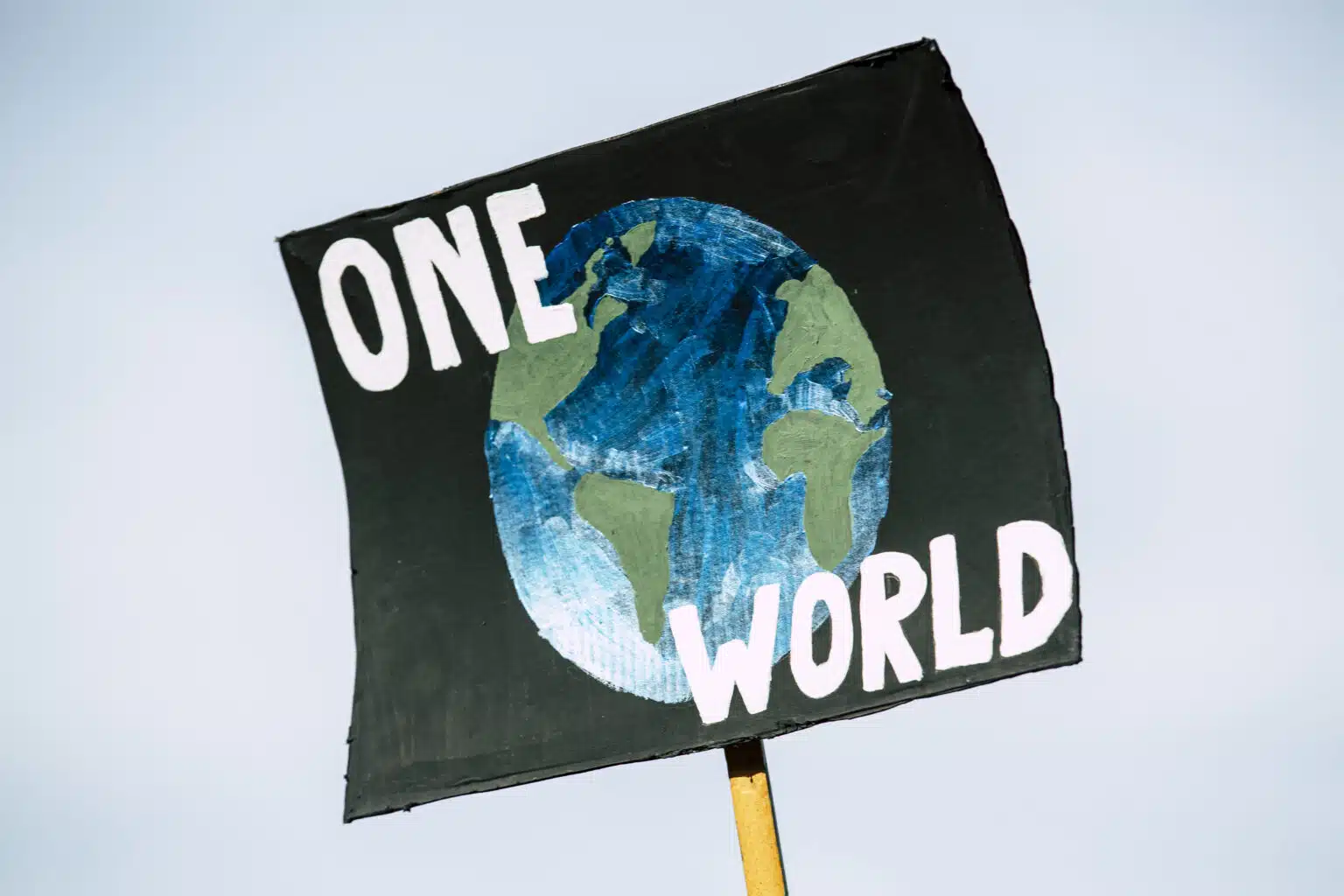The demonstrations are the most recent in a growing string of protests against China’s zero-Covid policies that have also grown more outspoken in their criticism of the administration and President Xi.
Due in part to China’s relatively low vaccination rates and efforts to safeguard the elderly, the zero-Covid plan is the last of its sort among the major economies of the world.
Details of the protest: how did it come to be and why?
In China, protests against the government’s draconian COVID regulations have grown more intense, and some citizens have taken to publicly criticizing the Communist Party authorities.
In Shanghai, where thousands of demonstrators have gathered, the BBC has seen individuals being loaded into police cars. Additionally, there have been student protests at Beijing and Nanjing universities.
The most recent disturbance comes following a demonstration in Urumqi, a rural city in the northwest, where lockdown procedures were cited as a cause after a tower block fire killed 10 people. Chinese authorities dispute that Covid restrictions were to blame for the deaths, although late on Friday, Urumqi officials did offer an extraordinary apology and promised to “establish order” by gradually removing restrictions.
People were heard openly chanting chants like “Xi Jinping, step down” and “Communist party, step down” during the demonstration on Saturday night in Shanghai, China’s largest metropolis and a major international financial center. While others lit candles and placed flowers for the victims in Urumqi, others waved blank white banners.

Protests in China, an unusual phenomenon
Such demands are uncommon in China, where criticizing the president or the administration directly can result in severe repercussions. Analysts, however, claim that the government appears to have badly miscalculated the mounting opposition to the zero-Covid strategy, a strategy that is intrinsically linked to Xi Jinping, who recently vowed there would be no veering from it. One demonstrator in Shanghai told the BBC that seeing people on the streets left him feeling “shocked and a bit delighted,” adding that it was the first time he had ever witnessed such widespread opposition in China.
He claimed that lockdowns had prevented him from visiting his ill mother, who was receiving cancer treatment, and had left him feeling “sad, furious, and helpless.” When police officers probed what their reactions were to the demonstrations, the response was “the same as you,” a female protester told the BBC. But they “wear their uniforms so they’re doing their job,” she added.
On Sunday, a similar crowd came to lay flowers for the Urumqi fire victims near Shanghai’s Urumqi Road. Police, who also flocked in large numbers to the protest location, however, picked these tributes up. As demonstrators gathered for a second day, the BBC observed police officers, private security guards, and plain-clothes police officers confronting them in the streets. Protesters that spearheaded anti-government slogans were removed, and in some cases, they were beaten or shoved up against a police cruiser.

Additional testimonies and evidence regarding the protest
Additionally, images and videos from Saturday’s student protests in Beijing and Nanjing universities have surfaced online. One student told the AFP news agency that hundreds of individuals participated in one such protest at Tsinghua University in the nation’s capital. The group was captured on camera screaming songs in favor of freedom and democracy while holding aloft blank sheets of paper, an act that has come to represent defiance against Chinese censorship.
Read More: Prachanda and PM Deuba unite to establish a new government in Nepal
Another protester told the Associated Press news agency that two people had been assaulted by police at the scene, and one of his friends had been attacked by police there, among other claims of violence. Although it is challenging to independently verify demonstration videos, several of them exhibit extremely frank and direct criticism of the government and its leader.

.org%2Fwikipedia%2Fcommons%2F0%2F03%2FJasmine_Revolution_in_China_-_Beijing_11_02_20_crowd_2.jpg&imgrefurl=https%3A%2F%2Fen.wikipedia.org%2Fwiki%2F2011_Chinese_pro-democracy_protests&tbnid=5csabwU_fnyF5M&vet=12ahUKEwia7rnj0c77AhUs1XMBHaOgC-4QMygwegUIARCZAg..i&docid=Mz67BbGP_YHFNM&w=3648&h=2056&q=protests%20in%20china&ved=2ahUKEwia7rnj0c77AhUs1XMBHaOgC-4QMygwegUIARCZAg
Recent progressions in the protest
According to several sources, the Urumqi fire represented a worst-case scenario for many Chinese people who have recently been subject to numerous restrictions: being confined to one’s flat with no means of escape. Authorities have denied this, but that hasn’t stopped the people from becoming outraged and alarmed.
It has now reached the most recent breaking point in the rising frustration. Millions have grown weary of regular Covid testing and movement limitations over the past three years. Every aspect of society, especially young university students, has been sparked by the fury as it has expanded to every corner of China, including remote areas like Xinjiang and Tibet.
Protests against Covid policies have increased in frequency as this rage rises. But even this weekend’s protests are out of the ordinary in this new status quo, both in terms of their size and the candor with which they criticized the leadership and President Xi Jinping. Others have opted to wave the Chinese flag and sing the national anthem, whose lyrics encourage the populace to “stand up, rise up” and espouse revolutionary ideas. It’s a display of patriotism that might potentially be interpreted as a strong statement of support for fellow Chinese who are suffering as a result of Mr. Xi’s zero-Covid policy as well as a demand for action.
References :
https://www.bbc.com/news/world-asia-63771109
https://www.ft.com/content/427bb840-9c5d-11e9-9c06-a4640c9feebb












